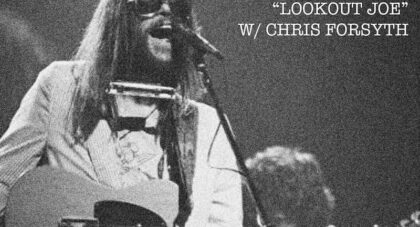Gabriel da Rosa’s debut album, É o que a casa oferece, arrives at an auspicious time as Brazilian music is becoming more ubiquitous, cresting a wave of popularity that has been building over the better part of a century. The last 90 years have seen Carmen Miranda’s polyrhythmic schtick in the thirties and forties, the smooth and sophisticated bossa nova craze of the early sixties, and in the seventies Flora Purim, Airto Moreira, and Milton Nascimento championed an adventurous style of Brazilian jazz. Now, a new Brazilian tide is rising, building off the previous waves’ continued relevance, and it . . .
Only the good shit. Aquarium Drunkard is powered by its patrons. Keep the servers humming and help us continue doing it by pledging your support.
To continue reading, become a member or log in.


